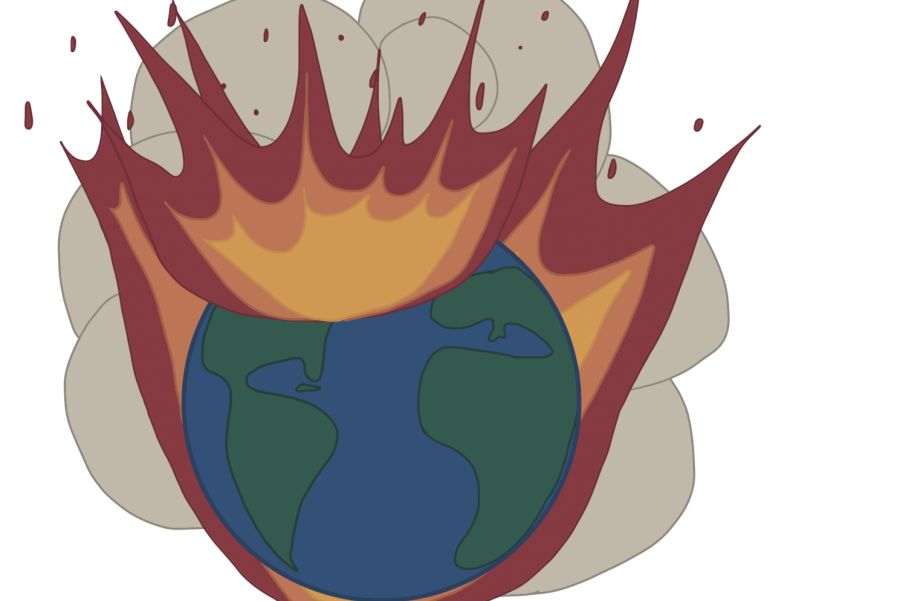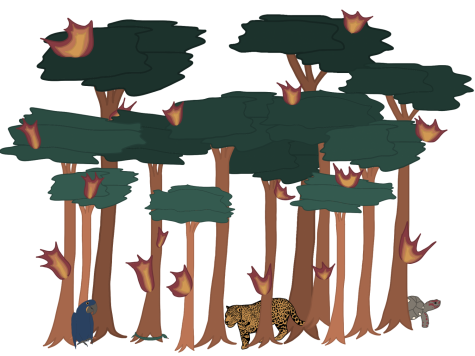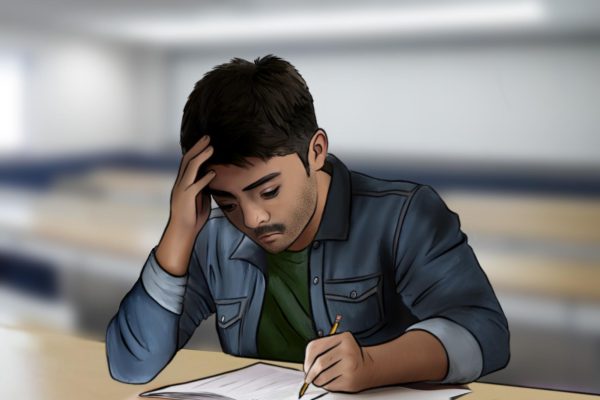Going up in flames
If the Amazon rainforest continues to burn it will drastically hurt the global environment.
We have lost 20% of the Amazon Rainforest, the most important natural resource the Earth has to offer. If the deforestation of the Amazon doesn’t stop soon, we may lose it. If we lose the Amazon, we lose the fight against global warming, and it would trigger a cycle of environmental collapse because it plays an important role in the fight against global warming. It provides for everything from raw materials to medicines.
Trees in the Amazon Rainforest absorb greenhouse gases such as carbon dioxide, which would otherwise block heat from leaving Earth’s atmosphere. Limiting the number of greenhouse gas emissions, globally, is an imperative step in the fight against climate change. Greenhouse gases can be released into the atmosphere naturally, but the release of greenhouse gases has increased 30% since the Industrial Revolution because of the burning of fossil fuels and deforestation. Because of the current fires in the Amazon, an increase of carbon dioxide is being released into the atmosphere. A majority of the fires in the amazon are due to human deforestation to make room for farms, highways or cattle. The enforcement of environmental laws in Brazil has dropped since Jair Bolsanro became president, with 30% less fines than last year, making it easier to deforest the land. With fires in the Amazon Rainforest already increasing 84% since 2013 and Bolsanro’s leniency towards this issue, that number could very well put the Amazon in more danger than it’s ever been.
These fires are devastating to the planet’s health, especially with climate change already being such a concerning threat to global health, and we have already lost 20% of the rainforest, with numbers rising. If this persists and the global temperature keeps rising, we will lose the ice caps, polar bears and numerous other species that can’t survive the rising heat.
The best thing we can do to help prevent this natural disaster isn’t complain about it to your friends, or donating. Instead, you should aim to reduce your carbon footprint, which can be done by driving less, and walking or biking as much as possible. Another great thing to do is plant trees, which will soak up some of the carbon dioxide in the air and help prevent climate change.
Tragically, global warming isn’t the only problem we face when looking at the deforestation of the Amazon. Since the world ecosystem is interconnected, losing a big player in the global environment, such as the Amazon Rainforest, would not only accelerate climate change but rain patterns as well. Imagine the Amazon Rainforest as a giant sponge: it sucks in carbon dioxide and traps it, which stops the carbon dioxide from harming the atmosphere. Not only does it trap carbon dioxide, but it also creates 50-75% of its own precipitation; when the sponge is wrung out, it keeps the carbon dioxide trapped, but releases so much water that it affects weather patterns in Central, Western and South America. If the Amazon were destroyed beyond repair, we would lose all that precipitation it creates, a loss that would be felt globally. It would shift the rain patterns of the world, which would mess up our struggling environment.
The Amazon Rainforest is extremely important because it has the most biodiversity on the planet and is home to about 30% of the world’s species. Destroying the Amazon would change the global ecosystem by affecting weather patterns, global warming, and the 30% of species that live there, not to mention its indigenous population. The key to fixing the global ecosystem starts with preserving the Amazon Rainforest.
Your donation will support the student journalists of Kirkwood High School. Your contribution will allow us to purchase equipment and cover our annual website hosting costs.

she/her
Hobbies and Interests: Reading, hanging out with friends, and Netflix.
Favorite Song: I don't have a favorite song, but my favorite artist...

he/them
Hobbies and Interests: I love reading, drawing, hanging out with friends, playing with my dogs, listening to music
Favorite Song: “World's...














